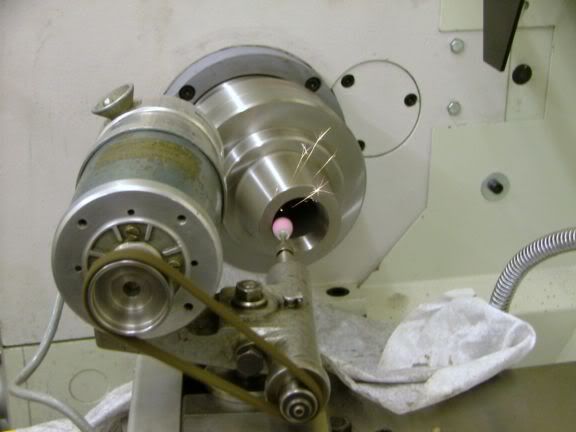Tony Bird
Senior Member
Hi,
Has anyone had any experience of using flat transmission belts on pulleys? If so ant information would be greatly appreciated. I have just made a pulley for use on my large oscillating engine and would like to use a flat belt drive.
The pulley was made from a serviette ring bought in a charity shop yesterday for £2.49 for 4; the intention is to make the other three rings into a transmission system and it would be nice to use flat belting if it is practical. Interestingly the rings under the plating are nickel silver as I though they looked a little cheap I thought they would be brass so they were EPNS!
Hopefully the following photographs will be found interesting.








I hope someone can help.
Regards Tony.
Has anyone had any experience of using flat transmission belts on pulleys? If so ant information would be greatly appreciated. I have just made a pulley for use on my large oscillating engine and would like to use a flat belt drive.
The pulley was made from a serviette ring bought in a charity shop yesterday for £2.49 for 4; the intention is to make the other three rings into a transmission system and it would be nice to use flat belting if it is practical. Interestingly the rings under the plating are nickel silver as I though they looked a little cheap I thought they would be brass so they were EPNS!
Hopefully the following photographs will be found interesting.








I hope someone can help.
Regards Tony.


















































































